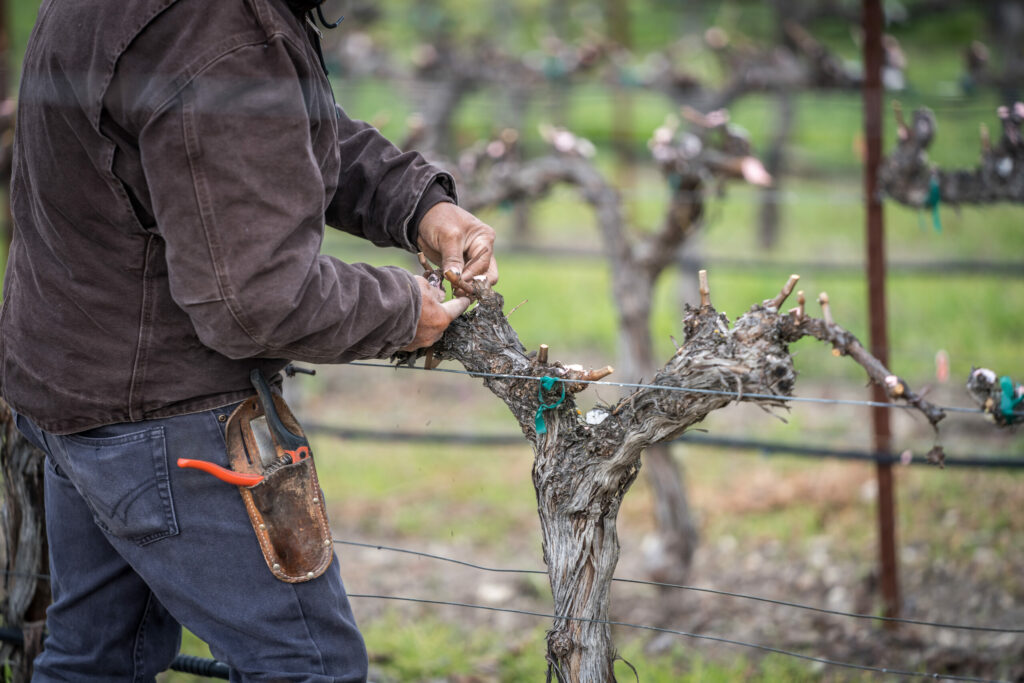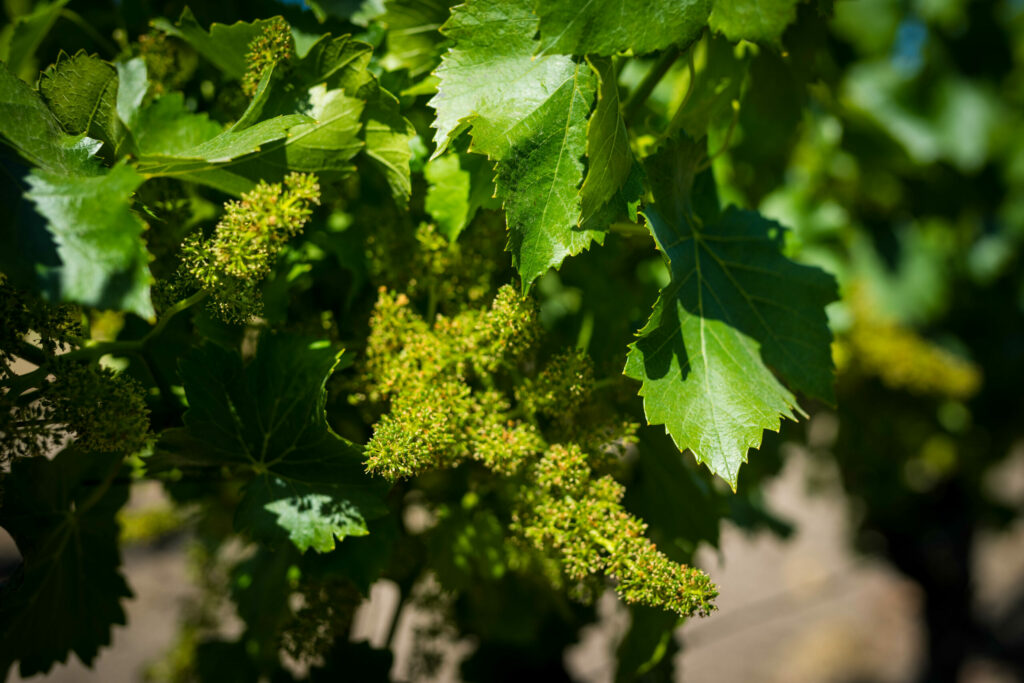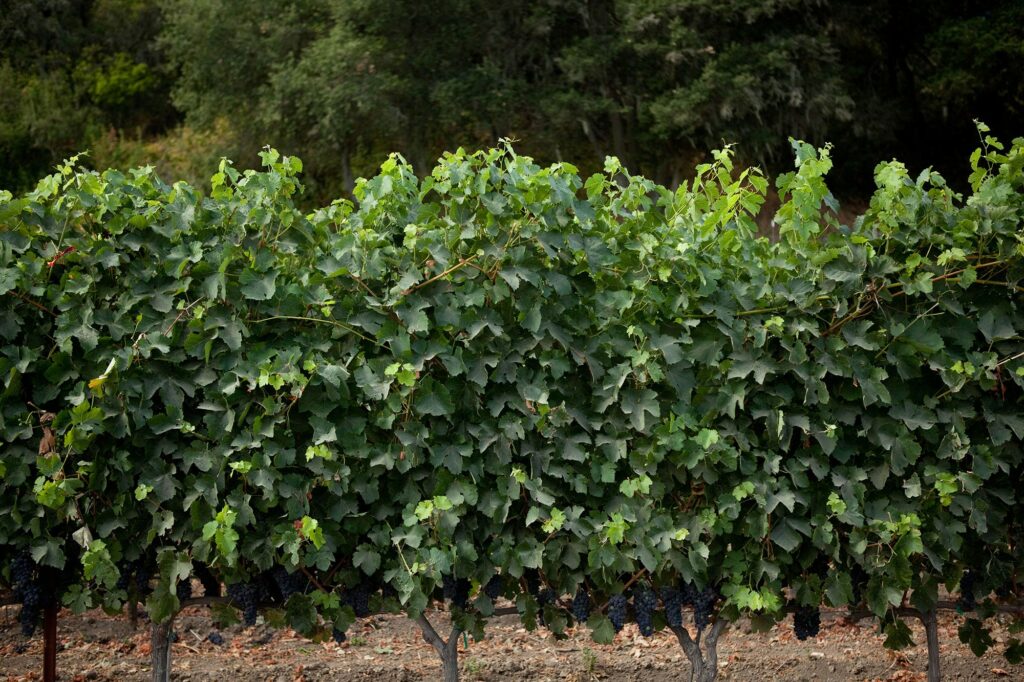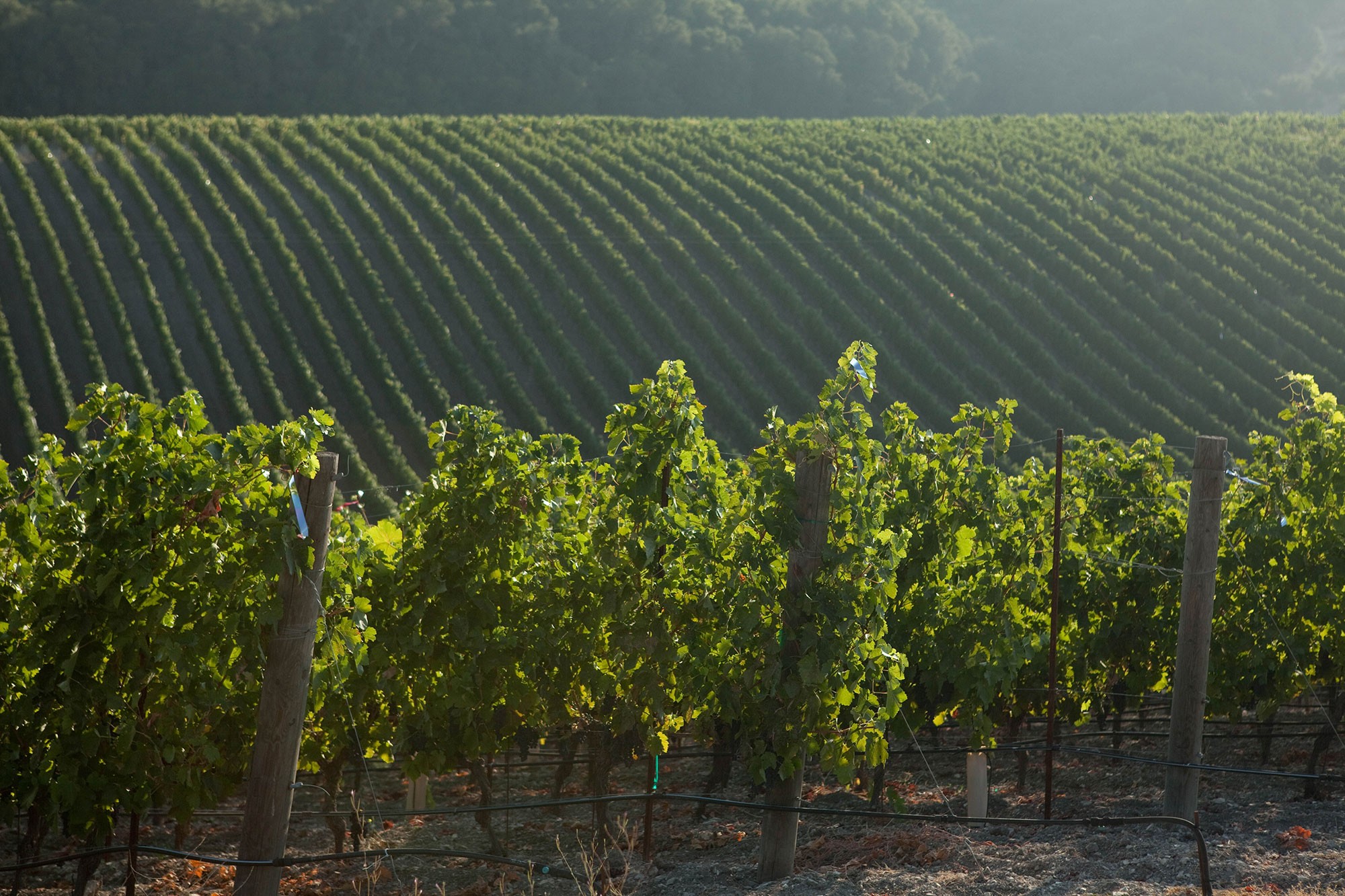
VITICULTURE
The choice of rootstock was made to take full advantage of the terroir. Only those with a long, slow maturation, and a deep root system were selected. For the same reason, planting was done with a very high density of more than 2,000 plants per acre. The irrigation system was designed specifically with the ability to irrigate each row separately. This allows an optimum balance between the amount of water, the sun exposure, and the soil.
The choice of location for each variety, the irrigation option, the terroir, and the high density emphasize more complexity and concentration in the fruit. Due to our location, we are convinced that blending is essential to obtain the right balance between tannins, alcohol, and acidity without any one variety overpowering the others. This ensures a superb wine with great originality.
The foliage is a very important element. It is the "maturity factory" of the vine. This explains why the volume of foliage is so large: more than 4 feet, allowing a huge amount of leaf growth. A vertical trellis system is used in which the foliage is hand trained up between trap wires allowing significant sun exposure and greater maturity of the polyphenol (Tannin/Antocyan). This provides a better balance of the sugar and phenolic acid at harvest.
The pruning is the classic "Guillot Double" with a very low double cordon or low classic double cordon. The rows are disked and chiseled regularly to help the water penetrate and reach the deeper soil. This forces the root system to dig deeper and take advantage of the terroir. Irrigation is only used when needed, mostly during flowering and veraison.
Time of harvest is based not only on the sugar level but also on the phenolic maturation. Yields are limited to 2 tons per acre to ensure premium fruit with an optimum concentration, tannin maturity, and balance.
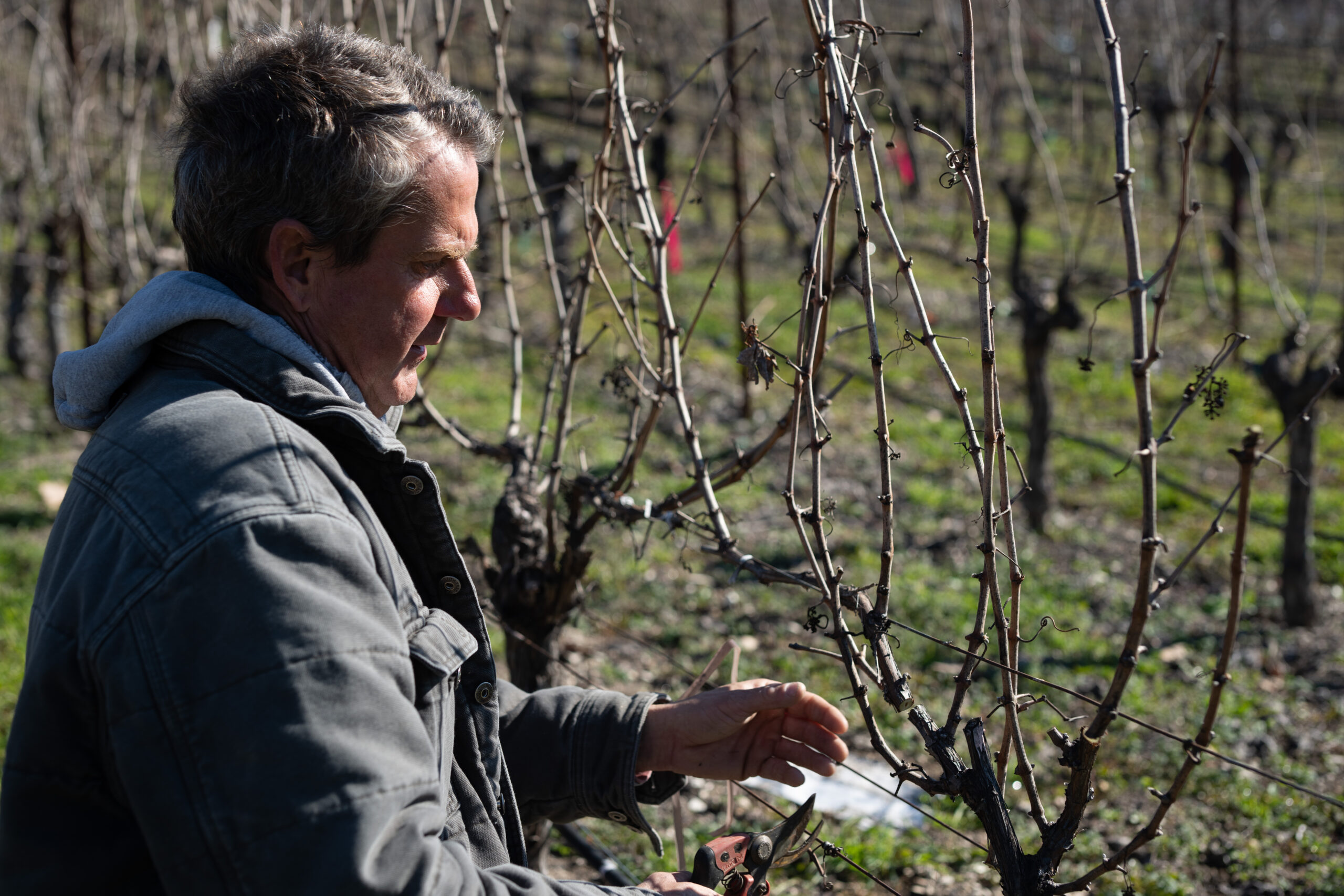
For a more in-depth look at where each variety is planted, click here.

